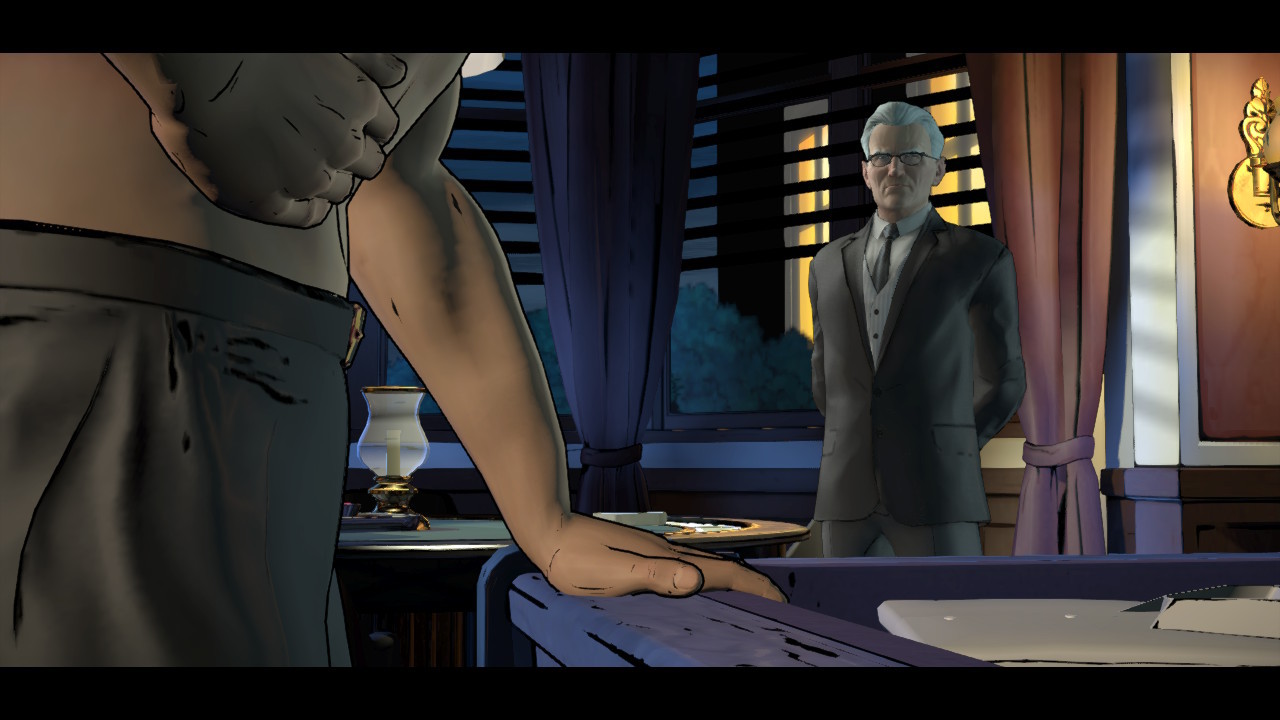Batman: The Telltale Series Season One is, in theory, a game well-suited to the Nintendo Switch. Its episodic structure allows players to experience its narrative-driven adventure in short bursts, with each episode lasting around three hours, and thanks to the portability of the Switch, players can now dip in and out at their convenience. You can read our review of individual episodes for specifics here, but as a whole Season One of the series starts off really strong. While the following episodes don't quite carry the momentum, it puts some interesting spins on familiar characters, making it worth playing for Batman fans. However, doing so on the Nintendo Switch comes with concessions.
Season One of Batman arrives on Switch with some drops in visual fidelity. While the game by no means looks bad, its rough edges are noticeable. Compared to its counterparts on other platforms, textures are less detailed, colours aren't as vibrant, and the poster edge effect that gave the game its comic book feel is diminished. Lighting also seems to have been scaled back, making for a less atmospheric experience. In handheld mode, the game is letterboxed, which means there are distracting black bars at the top and bottom of the screen. While these bars disappear when playing in docked mode, seeing the game on a big screen shines a spotlight on its other blemishes.

There are also some quirks in the way you interact with the game. The Switch version is playable in handheld and docked mode with controllers and, overall, this feels like the best way to play. However, during quick-time action sequences there were occasions when it felt like button presses were either not being registered or the game wasn't properly signalling that they had been. For some interactions, the on-screen indicator turns yellow to show that it has been properly executed, but this didn't feel consistent. Fortunately, there aren't any major punishments for missing a command, as scenes continue to play out regardless of missed inputs.
In handheld mode, it's also possible to play entirely using the touch screen. The UI changes so that dialogue options are jumbo sized and can be tapped, while pressing and holding points on the screen will move Batman or Bruce Wayne around. This control scheme works well in the exploration and investigation portions of the game, but removes depth from the action sequences, as quick-time commands change from specific button presses to simply tapping parts of the screen. Actions that require the player to tap two parts of the screen simultaneously also register very inconsistently, which can be frustrating.
Overall, the Switch version of Batman: The Telltale Series Season One is a serviceable, but not ideal, way to play. Those that have the option to get the PS4, Xbox One, or PC versions may find that doing so is both more cost-effective than purchasing the Switch version, and makes for a better experience.
GameSpot played through Batman: The Telltale Series Episode 1 on Nintendo Switch. This is our impression of how the game performs technically; for a more detailed analysis of the episodes read our reviews here. GameSpot was provided with a code by Telltale Games.











